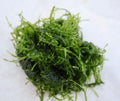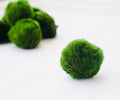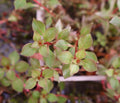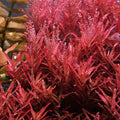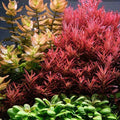Quick Tips on How to Plant Aquarium Plants in Fish Tank
Installing an aquarium in your home is the finest way to offer your surroundings spectacular color and life. By simple looking at the aquatic pets, you can enjoy and have fun while alleviating all the stress of daily life.
If you want to add a freshwater aquarium to your home but aren't sure where to start, this blog post will help you set up a gorgeous attraction by simply answering the most basic questions. Installing an aquarium in your home will bring you years of joy, therefore it is well worth the effort.
Types of Aquarium Plants
What types of live plants should I add to my aquarium?
Buce, Amazon Sword, Java Moss, Hornwort, and Java Ferns are just a few examples of hardy plants you should pick when adding live plants to your aquarium for the first time. You can start adding more plant species as your confidence and experience in aquascaping grow.
To Cycle or Not?
Does my aquarium need to be cycled before I add plants?
Before introducing live plants, an aquarium does not necessarily need to be cycled. A brief explanation: Ammonia is not poisonous to plants (unless when it is too much). They do not mind at all, however, it is known to be used as fertilizer. In essence, adding plants to a new aquarium is another way of reducing (or eliminating) ammonia from the aquarium water.
Gravel and Substrates
Can gravel be combined with plant substrate?
To prevent the substrates from blending together over time, it is recommended to place rocks or other decorative elements between each one. Adding gravel around the rocks to give the appearance of depth is a common addition made by aquascapers, who use all of the most common substrate types.
Should I use gravel or substrate?
For the vast majority of freshwater aquariums, gravel is preferable. Gravel has many advantages, one of which is that it allows water to pass through it, reducing the accumulation of harmful bacteria and amoebas in the substrate. These can make your fish ill and cause aquarium mold growth if they are left unmonitored for an extended period of time.
Filling the Water in Your Fish Tank
Filling the water does not really have a complicated procedure. Follow the setup instructions that came with the aquarium equipment to set up the heater, lighting, filtration, and aquarium. Rinse the aquarium gravel and every decorative object you plan to add to the tank. You've finished setting up the aquarium, so all that's left to do is fill it with water properly.
Aquarium Hardscapes
How should I assemble my aquarium's hardscape?
You can express your love of art by creating your own setup. You can make your imaginations go wild while setting up your little water kingdom. Place the larger rocks first (in order of size) if you are only using rocks, and then add smaller pieces around the bases. As the aquarium plants will go there, keep the hardscape away from the front, rear, and sides of the tank. Additionally, it facilitates maintenance tasks like vacuuming the substrate and removing algae.
Placing Live Plants in The Tank
How can you include live plants in an existing tank?
Is it possible to place live plants in a freshwater tank?
One of the best ways to maintain your fish's health is to add live plants to your aquarium, which helps mimic a natural environment on a smaller scale. Fish can find safety and refuge in plants. They can help in reducing the growth of algae since they compete with it for nutrients.
Smaller plants like hair grass and Anubias specie can be placed in front of tall plants like sword plants and Anacharis in the substrate around the back, sides, and corners of the aquarium. Keep the aquarium's front center area wide open for fish.
To Filter or Not?
Do tanks with living plants require filtration?
If you have live plants, do you still need a filter?
Yes, an air sponge filter is still advised even if your aquarium contains live plants. Live aquarium plants can filter the water by collecting ammonia and carbon dioxide, but they can't get rid of detritus.
How to Maintain Healthy Live Plants
A well-planted tank must be established, which requires patience and care. Plant health can be maintained through a variety of methods, and nutrients are essential for growth. The water in the aquarium provides nourishment for the plants. Additionally, a lot of aquascaping enthusiasts put bottom warmers, specific substrate fertilizers, high-intensity lighting, mineral supplements, and carbon dioxide addition. The conditions needed vary depending on the plant species.



